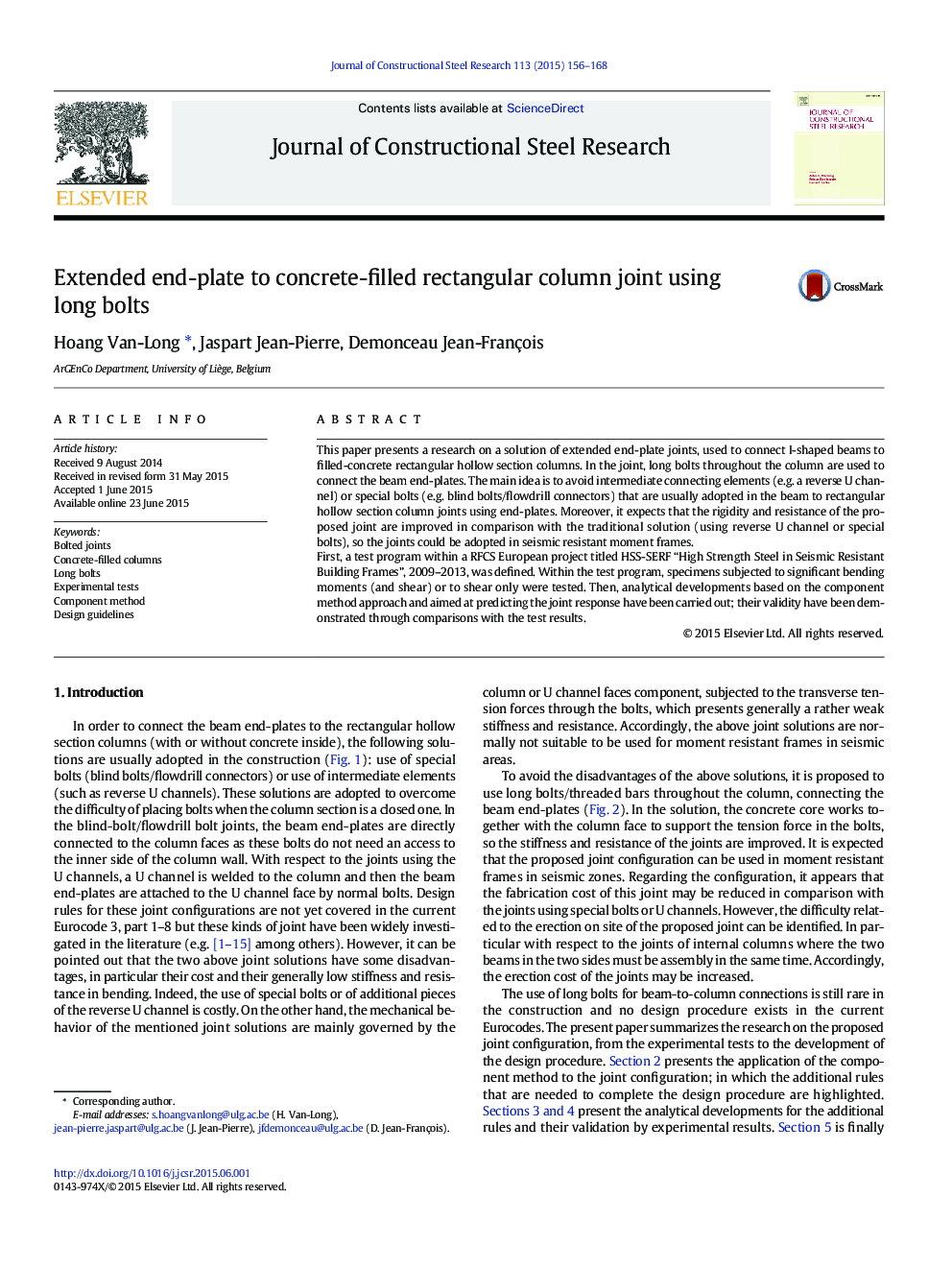| Article ID | Journal | Published Year | Pages | File Type |
|---|---|---|---|---|
| 284458 | Journal of Constructional Steel Research | 2015 | 13 Pages |
•A solution for end-plate to concrete-filled rectangular column joints is proposed.•Long bolts throughout the column are used to connect the beam end-plates.•Tests on joints in bending, joints in shear and load introduction were performed.•Design guidelines based on the component method have been developed.
This paper presents a research on a solution of extended end-plate joints, used to connect I-shaped beams to filled-concrete rectangular hollow section columns. In the joint, long bolts throughout the column are used to connect the beam end-plates. The main idea is to avoid intermediate connecting elements (e.g. a reverse U channel) or special bolts (e.g. blind bolts/flowdrill connectors) that are usually adopted in the beam to rectangular hollow section column joints using end-plates. Moreover, it expects that the rigidity and resistance of the proposed joint are improved in comparison with the traditional solution (using reverse U channel or special bolts), so the joints could be adopted in seismic resistant moment frames.First, a test program within a RFCS European project titled HSS-SERF “High Strength Steel in Seismic Resistant Building Frames”, 2009–2013, was defined. Within the test program, specimens subjected to significant bending moments (and shear) or to shear only were tested. Then, analytical developments based on the component method approach and aimed at predicting the joint response have been carried out; their validity have been demonstrated through comparisons with the test results.
